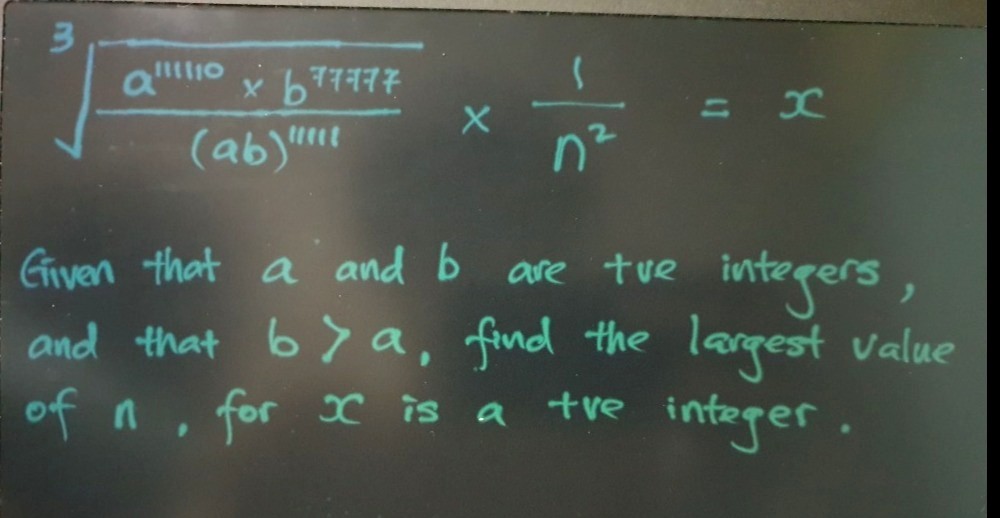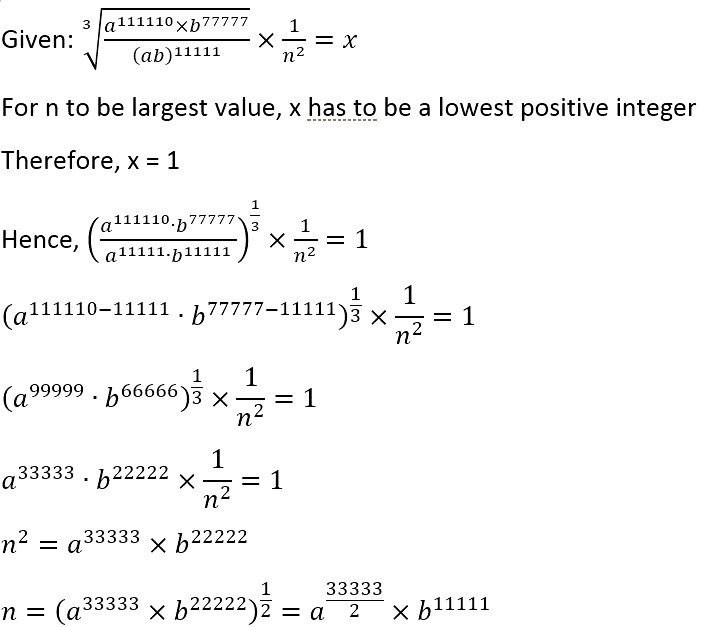Ask Singapore Homework?
Upload a photo of a Singapore homework and someone will email you the solution for free.

Question
Secondary 1 | Maths
One Answer Below
Anyone can contribute an answer, even non-tutors.

Given that {[cube_root(a¹¹¹¹¹⁰ × b⁷⁷⁷⁷⁷) / (ab)¹¹¹¹¹] × 1 / n²} = x, and that
1. a and b are positive integers
2 b > a
3. x is a positive integer
Find the largest possible value of n.
The term in the cube root reduces to the cube root of (a^99999 * b^66666), or in other words, a^33333 * b^22222.
This can be further rewritten down into (a^3 * b^2)^11111.
From the looks of things, a and b can be any two random numbers amd tje value of (a^3 * b^2 can be any possible value. But we are not certain of the divisibility of (a^3 * b^2) because this is highly dependent on our choice of a and b. Natural numbers are basically non-negative integers comprising 0 and all the whole numbers.
The only factor which we are certain of is 1 (if a and b are unknown), so the only way we can be certain that the product of the cube root and 1/n2 is when 1/n2 is not a fraction, or the largest integer value of n is 1.
(a³³³³³ × b²²²²²) × (1 / n²)
= (a¹¹¹¹¹ × a²²²²² × b²²²²²) × (1 / n²)
= a¹¹¹¹¹ × [(ab)¹¹¹¹¹]² × (1 / n²)
So... since b > a, we can say that n² could be equal to [(ab)¹¹¹¹¹]², and n = (ab)¹¹¹¹¹
That's where I'm stuck. -_-"
Then yes, you are correct.
Or even better: a^11111 can be broken further down into (a^5555)^2 times one more a.
So in short,
a^33333 * b^22222
= a^1 * a^33332 * b^22222
= a * a^16666 * a^16666 * b^11111 * b^11111
= a * (a^16666 * b^11111)^2
So n will be equal to the term inside this bracket (a^16666 * b^11111).
See 1 Answer





